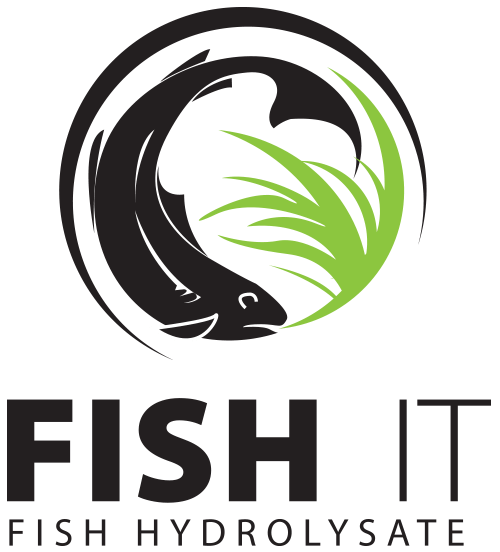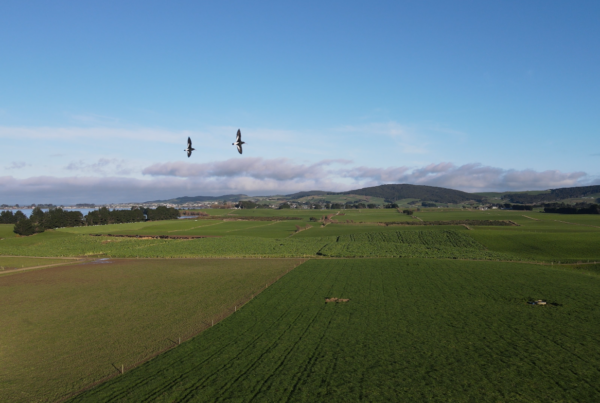Our conversation with Ray Burr was a long one so we have broken it into two parts. In this article we discuss his King Country dairy farm system pivot and how that went for Ray and his partner Donna. Next month we will get into the nuts and bolts of his bottom line improvements and how they stacked up in the fine tuning of his farming system.
Setting the scene
Farmers today are facing a future of increased complexity arising from new regulatory requirements, He Waka Eke Noa, changing consumer awareness and supply chain demand for sustainable produce such as the Nestlé Net Zero Roadmap where 50% of their ingredients will be sourced through regenerative agricultural methods by 2030 (cue Fonterra increasing sustainability requirements on dairy producers).
The ongoing challenge is how to balance the needs of the planet with the needs of the people, while at the same time achieving economic prosperity.
In the middle of this is the farmer: spinning multiple plates labelled ‘uncertainty’, ‘high stakes’, ’small margins’, ‘fast changes’ and ‘judgment’. Farmers today are faced with the most challenging ‘perfect storm’: increasing input costs, softening commodity prices and interest rate driven mortgage stress and the feeling of being backed into a corner. Making a change from traditional farming systems were production may be high but economic surplus is marginal and the bank manager is breathing down your neck is akin to undertaking heart transplant surgery… while you’re riding the Tour de France. Ray has been there, and he has done that.
The Big Three
In terms of mineral recommendations, sulfur and boron, being anions, continually leach out of the system and need top up so these minerals are always required. Reece explains “They don’t lock up in the soil like cations, so we know every year you are going to need a minimum of 20 kilos per hectare of boron and 80 kilos of sulfur 90. The other mineral that is very deficient in New Zealand soils is silica. Our goal is to get silica to a minimum of 2000 parts per million. Silica is great at tying up the excess aluminium that resides in NZ soils after decades of synthetic fertiliser treatment”. Reece continues “Within 10 weeks of tying up aluminium what we are seeing through herbage tests are significant increases in copper, magnesium, calcium and phosphate without applying any of those products. All these nutrients have been tied up in the soil for years and begin to unlock. You’ve paid for that fertiliser, you may as well be using it.” One of Reece’s dairy customers has been five years without any phosphate application and is it still way above where it needs to be. “By doing the total nutrient test with Peter Norwood, Highland Nutrition have an inventory of nutrients and we know where things are at as every nutrient is given a rating” Reece explains.
”“I studied at Massey University back in the mid 80s, where if we used more than 25 kilograms of nitrogen, we were given a growling, a big red cross and told ‘you're overstocked, you have to destock’. So even back in the 80s, we knew well and the lecturers knew that we weren't supposed to use too much of this stuff, because it's going to have a detrimental effect. Well, fast forward 40 years and the detrimental effects are here.”
Raymond BurrKing Country Dairy Farmer, now owner of QLabs
Recent history
Ray started our conversation with a little bit of background. He explains “I studied at Massey University back in the mid 80s, where if we used more than 25 kilograms of nitrogen, we were given a growling, a big red cross and told ‘you’re overstocked, you have to destock’. So even back in the 80s, we knew well and the lecturers knew that we weren’t supposed to use too much of this stuff, because it’s going to have a detrimental effect. Well, fast forward 40 years and the detrimental effects are here.”
Between 1990 and 2020 agricultural nitrogen inputs increased 800% in New Zealand without an equivalent increase pasture production. In the quest for ever-greater productivity, turning to fertilisers, herbicides, pesticides is now killing our soils, stressing our farmers and threatening our ecology.
Although New Zealand has some of the richest soils in the world, decades of land management practices that follow the status quo have taken their toll, depleting the essential nutrients and killing off bacteria and fungi that create organic material essential to plants. With the catastrophic climatic conditions impacting New Zealand recently, soil health has been in the spotlight. In a world where government agencies and agribusiness have long pursued the holy grail of maximum pasture production, it is time to take a different approach.
Ray states his position “So we have to get smarter because these products are getting dearer and the future of food production is going to be regulated, we’ve got to really get down into the efficiencies of making work what we’ve already got. That is soil functionality.”
Isn’t it all about the science?
The Big Fert companies in New Zealand will tell you it is all about the science. Ray challenges that proposition. “Their science was done last century. So once that science has fulfilled its promise to produce food, where do you go next?” He continues “You have to look at new ways of getting even better at what you do. Take superphosphate for instance. we’ve been pouring it on in this country for donkey’s years. The next conversation has to be about how do we make the whole farming system more efficient, so that we can utilise more of what we’re putting on. The answer to that lies in the soil”
Ray explains “In my journey, as a farmer, we converted our sheep and beef farm in the King Country to dairying in 1990. And we milked 520 cows back when the average cow herd was 125 cows. So, we were quite innovative in what we were doing… until the wheels fell off. Too much nitrogen, too much phosphate. And too many health issues with the cows.” Ray continues “You know, you love your animals, you look after them, and it just tears you apart when they’re not getting any calves, aborting and all the rest of the health-related issues. The ‘science’ wasn’t working”
It was at this point Ray took matters into his own hands. “I did a big study on my farm and I paid my vet to do a five year recall of all the products I’d used on my farm and fertiliser programs and animal health issues from my own records. I sent it off to two of the top soil scientists in New Zealand and their eventual response after much follow up was ‘No, you’re right Ray, just carry on’.” Unimpressed, Ray sought out the experience of an NZ soil lab seeking a 13 element based, holistic soil fertility program and was refused help as it challenged the status quo. Third time lucky, Ray found Quantum Laboratories in the Hawkes Bay. A couple that owned a niche lab and worked directly and independently with farmers. Ray was so impressed he eventually bought the rights to the business in New Zealand which, today, operates as QLabs.
Sustainable Farm Management
With a revised fertiliser approach addressing all 13 elemental soil requirements and soil fertility, Ray smiles and says “the animal health turnaround on our farm was just amazing. After three years, no CIDRs, no inductions, ten week mating, eight week calving and no downer cows – none at all”. He continues “our farm was ticking along that smoothly, we had 520 dairy cows, two classes of young stock, 800 head of cattle altogether. Donna and I and one staff. We put in all our own crops, re-grassed, spread all our own fertiliser twice a year and we got a nitrogen use down to 15 kilograms for one third of the first rotation. I don’t think we needed it. But hey, it’s a feelgood factor.” After a full analysis of the books, Ray’s accountant was able to determine that these changes resulted in an additional $250,000 per annum direct to the bottom line by year three.
The fertiliser conundrum
The bank manager really put pressure on Ray and Donna. Ray explains “The bank manager said ‘Look, you’re not feeding maize silage, you’re not putting on urea. You know you’re gonna go broke’ I said don’t worry about me, worry about the others. The bank manager told me to submit my books to Mark and Measure (the Dairy NZ Annual Conference). So I did”
Ray continues “That year there were about 60 of us farmers. We submit our audited books for them to go through so they could compare apples with apples. We got there on the first day of the three day conference, Donna and I and this other couple, we were laughing and carrying on everybody else was pretty serious. At the end of the first day, we had to put our production figures up and they were middle of the road-ish. I said, don’t worry about that, wait till tomorrow. So tomorrow came along, the couple that we were laughing and having a lot of fun with had the highest economic farm surplus (EFS) there, and we were $20 behind them at $1300/hectare – at a time when milk solids pay out was $3-4/kg. “
“It was pleasurable farming, we just laughed and carried on and the guy that was there that did the highest production, his phone just rang nonstop for the three days and he left on the third day because something had gone wrong on the farm. He did twice as much production per hectare as us and had an EFS of $64 per hectare.
At the end of the conference, the audience was asked by the facilitator ‘what did you learn?’ Ray stuck his hand up and said “I wouldn’t get out of bed for $64 a hectare. All that work, all that stress.” Two days after the conference the bank manager arrived at the farm to quiz Ray and Donna on how they got on. That was the last time they saw or herd from a bank manager.
The bottom line
For Ray, it is all about soil health, plant health, animal health. As he says “At the end of the day it’s the animal and its produce you sell that funds the whole operation. So kilograms of dry matter, anybody can grow kilograms of dry matter, just go and chuck urea on but that is not animal performance.”

And as for the Big Fert ‘science’. Ray is a great believer that on farm is where all the good discussion takes places. He asserts “Get out in the field so you can actually look at things and have those real discussions”. He continues “New Zealand farmers are probably the biggest research organisation in New Zealand. If they were allowed a little bit more freedom, then there would be even better research”.
In the next article in our conversation with Ray Burr, we will look at the bottom line improvements in his King Country dairy operation and where the financial benefits came from in fine tuning his farming system.



